Imperial Cinema
- Arun Puranik | arun.puranik@gmail.com
One still thinks of the Parsi riots that happened roughly 75 years ago while discussing Imperial Cinema. The first Bombay Talkies film, “Jawani ki Hawa”, by Himanshu Roy, was released on September 16th, 1935, at Imperial. Devika Rani, the movie’s main character, is a pretty young woman who doesn’t want to marry the man her family has picked out for her. Instead, she elopes with her partner, Najm-Ul-Hussain, by train. The pair becomes involved in the ensuing chaos after a murder occurs in the same train compartment. This was the plot of the film. Khurshid Minovar Homji, a classical music student at Lucknow’s the Morris International University of Music, used to host a unique musical program on Akashwani back then. Mehru, her oldest sister, played the sitar, and her two younger sisters, the Mandolin and the Dilruba. Khurshid herself sang, accompanied by the organ. Their ‘Homji Orchestra’ was quite popular back then.
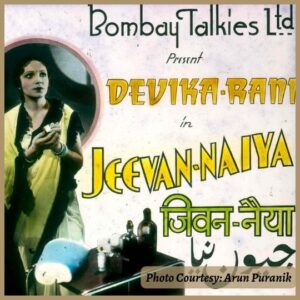 After much coaxing, Himanshu Rai persuaded Khurshid and her younger sister Manik to work with Bombay Talkies. The Parsis were shocked to learn that two young girls from their orthodox community were appearing in movies. Stories were published in newspapers. Himanshu Rai has received death threats. He referred to Manik as ‘Chandraprabha’, and he referred to Khurshid as ‘Saraswati Devi’. Both the movie’s credits and the commercials featured these names. In Imperial, “Jawani ki Hawa” was released. Chandraprabha had a supporting role under the direction of Saraswati Devi, the music director. The Parsis finally understood what had occurred after a few days.
After much coaxing, Himanshu Rai persuaded Khurshid and her younger sister Manik to work with Bombay Talkies. The Parsis were shocked to learn that two young girls from their orthodox community were appearing in movies. Stories were published in newspapers. Himanshu Rai has received death threats. He referred to Manik as ‘Chandraprabha’, and he referred to Khurshid as ‘Saraswati Devi’. Both the movie’s credits and the commercials featured these names. In Imperial, “Jawani ki Hawa” was released. Chandraprabha had a supporting role under the direction of Saraswati Devi, the music director. The Parsis finally understood what had occurred after a few days.
Parsis had a strong presence in Gaondevi, Grant Road, and Dhobi Talaav. Every Parsi voiced their opposition in front of the theatre. This led to riots. Ardeshir Irani, the Modi brothers, Wadia, and other Parsis dominated the film industry at the time. And the ironic thing about these riots was that J.B.H. Wadia, a Parsi who valued peace and actually belonged to Roy’s organization, led them. Khurshid was forcibly removed from her car on the way to Bombay Talkies in Malad, but Himanshu Roy strongly denied it was Saraswati Devi, averting any potential trouble. Another intriguing fact is that Najm-Ul-Hussain actually eloped with Devika Rani and brought her to Calcutta (now Kolkata) after a few years.
At Mangaladaswadi, Dadasaheb Torne and Nanabhai Chitre shot the first silent film in India, ‘Pundalik’. On April 5, 1997, the Imperial Theatre was constructed there. The old theatres have been redeveloped to the point where you can no longer identify them. But the Imperial Theatre’s interior will nevertheless take you to a century ago. The first theatre to be “royally” constructed in Girgaon was the “Royal Opera House“. But it resembled the opera house in London.
However, Imperial is a wonderful illustration of classical Hindu construction. According to old Hindu tradition, the theatre may have once had four entrances called “Hatti darvaje”: one from Lamington Road, one from V.P. Road, and one from Naaz Garage Lane. There has to be another coming from behind. There used to be a path leading to this theater’s basement. A makeshift shade made of bamboo poles and a roof was built on the footpath outside the Lamington Road entrance. In the case of extreme heat or rain, both spectators and hawkers stand here. This one-story theatre had open areas on both sides, so it had a very elaborately adorned roof.
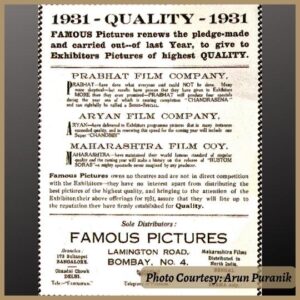 Imperial initially released the Imperial Company’s silent films. Imperial’s prominent actors were Prithviraj Kapoor, Sulochana, Billimoria, Jaal Merchant, Zubaida, and others. People would swarm in front of Sulochana’s residence in Chowpatty starting at dawn every day. Sulochana had higher pay than Mumbai’s Governor. She had several successful silent films released at Imperial, including “Mumbaichi Sethani,” “Lal Bavto,” “Anarkali,” “Dakoo ki Ladki,” “Madhuri,” “India M.A.”, and “Alibaba.”
Imperial initially released the Imperial Company’s silent films. Imperial’s prominent actors were Prithviraj Kapoor, Sulochana, Billimoria, Jaal Merchant, Zubaida, and others. People would swarm in front of Sulochana’s residence in Chowpatty starting at dawn every day. Sulochana had higher pay than Mumbai’s Governor. She had several successful silent films released at Imperial, including “Mumbaichi Sethani,” “Lal Bavto,” “Anarkali,” “Dakoo ki Ladki,” “Madhuri,” “India M.A.”, and “Alibaba.”
At the time, there were competitions between Sulochana’s silent films in the Imperial and Master Vitthal’s silent films in the nearby West End theatre. ‘I purchased a large number of movie booklets (8 pages of movie songs) from Chor Bazaar about 35 years ago. Each booklet included the name of the theatre where the film was shown as well as the date it was released. D.B. Samant, a senior movie scholar, has produced notes on hundreds of films since the early days of talkies until 1960. It was easy for me to remember which movies were released at Imperial once I had access to this incredible collection of rare information.
Sagar Movietone’s ‘Sabita Devi’, Jaal Merchant’s ‘Grihalakshmi’, Devika Rani and Ashok Kumar’s ‘Jeevan Nayya’, Prithviraj Kapoor’s ‘Chingari’, Sadhna Bose’s ‘Kumkum the Dancer’, Fazli Brother’s ‘Masoom’, Yakub’s ‘Aina’, Bombay Talkies’ ‘Char Aankhein’ and Devika Rani’s last movie ‘Hamari Baat’ were some of the movies released at Imperial.”
The 1934 film ‘Mill (Majdoor)’, starring Jayraj and Bibbo, was based on Munshi Premchand’s narrative. The British government banned the release of this film for two years. Finally, as “Garib Parvar,” this talkie was published by Imperial in 1936. Another film, “Madam Fashion,” was written entirely by a single woman, including the script, screenplay, dialogues, songs, music, acting, singing, and directing. It was a type of record back then! She has a daughter, Nargis, who played the role of Baby Rani as a child actor in this film. The Bombay Talkies conducted an unusual experiment in 1936. They released two movies at a time, ‘Mamta’ and ‘Miyaan Biwi’, which were also released at the Imperial. In the fifth decade, Imperial became quite well-known and became really famous after the movie ‘Jawaab’ (1942) by P.C. Barua.
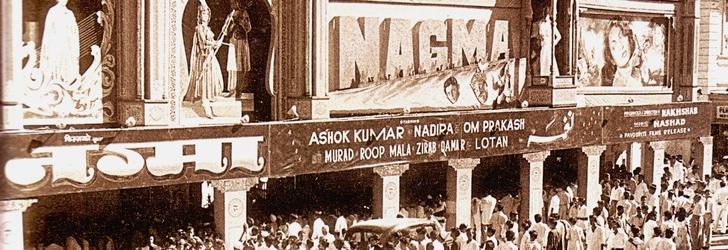
“Kuchh yaad rahe to sun kar jaa, Tu haan kar jaa, ya naa kar jaa”
This, and two other songs ‘Toofan Mail’ and ‘Ai chand chhup na janaa’ became very popular. Haribhau Mote and Vishram Bedekar had hired a special Victoria to come watch this movie. After this movie, ‘Dasi’, starring Ragini and Najam, also celebrated a silver jubilee at this theatre.
Two years had passed since the release of Naushad’s “Ratan,” and the songs from this film, including ‘Ankhiya Mila ke jiya bharma ke,’ ‘Aayi Diwali aayi Diwali,’ ‘O Jaane wale baalamva Laut Ke aa,’ and ‘Mil ke bichhad Gayi ankhiyan,’ were still being played on jukeboxes, All India Radio and Radio Ceylon. People adored the couple’s romantic conversations and fights as well as their elegance, feminine appeal, and manners.
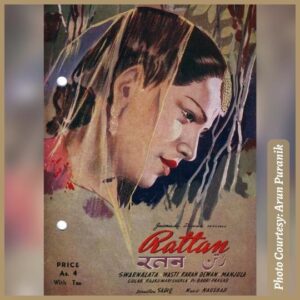 ‘Rattan’ received excellent pre-release publicity. People who love movies were really inquisitive and ready to see this film. Film producers believed that when a film was released at Imperial, it would undoubtedly commemorate a silver jubilee. And since the dates at Imperial were not available, the movie’s release was postponed. Finally, it was released at Imperial and went on to celebrate a golden jubilee. The production cost was recovered from H.M.V’s royalty alone. This was just the second movie of Swarnalata-the leading actress of ‘Rattan’. She received Rupees 2000 for this film in 1942. After the unprecedented success of ‘Rattan’, she starred in ‘Vamik Ajra’ in 1946, and for that movie, Swarnalata got a whopping 200,000 rupees. Famous Pictures, who were film distributors, also started producing movies with the 1946 film Nargis. They handled the management of numerous theatres in Mumbai. Nevertheless, the Imperial Theater hosted the premieres of two of their films: ‘Pyar ki Jeet’ (1948) and ‘Badi Behen’ (1949).
‘Rattan’ received excellent pre-release publicity. People who love movies were really inquisitive and ready to see this film. Film producers believed that when a film was released at Imperial, it would undoubtedly commemorate a silver jubilee. And since the dates at Imperial were not available, the movie’s release was postponed. Finally, it was released at Imperial and went on to celebrate a golden jubilee. The production cost was recovered from H.M.V’s royalty alone. This was just the second movie of Swarnalata-the leading actress of ‘Rattan’. She received Rupees 2000 for this film in 1942. After the unprecedented success of ‘Rattan’, she starred in ‘Vamik Ajra’ in 1946, and for that movie, Swarnalata got a whopping 200,000 rupees. Famous Pictures, who were film distributors, also started producing movies with the 1946 film Nargis. They handled the management of numerous theatres in Mumbai. Nevertheless, the Imperial Theater hosted the premieres of two of their films: ‘Pyar ki Jeet’ (1948) and ‘Badi Behen’ (1949).
Suraiya’s ‘Tere naino ne chori kiya’, Rehman’s ‘O door janewale’ and ‘Bhool Jana, and Rafi’s ‘Ek Dil ke tukde hazaar huye’ from the film ‘Pyar ki Jeet’, starring Suraiya, Rehman, and Gop were tremendously popular in those days. During the function of arranging a marriage, the groom’s family usually asked the girl to sing a song. And girls in those days usually chose Suraiyya’s song ‘O door jaanewale’. Then, the next year, the movie “Badi Behen,” starring Rehman and Geeta Bali, was released. Songs like ‘Chup chup khade ho’, ‘Chale Jaana Nahin nain Mila ke’, ‘Jo Dil mein Khushi ban kar aaye’ sung by Lata, ‘Bigdi banaanewale bigdi banaa de’ and ‘Woh paas rahein ya door rahein’ sung by Suraiya had also become very popular.
Baburao Pai of “Famous” was the most brilliant and innovative distributor in the area of cinema advertising and distribution at the time. He cleverly used the popularity of the songs from both of these films, and these songs were painted on the Imperial walls. People gathered to observe the adorned walls of the theatre. They read and hummed the songs while standing on the sidewalk. Both of these films played at Imperial for 25 weeks. The Thackeray brothers were both working for “Famous” at the time. Balasaheb Thackeray, the older brother, worked in the art department, and Shreekant Thackeray, the younger brother, worked in the music department as Husnalal-Bhagatram’s, assistant. It was Balasaheb who had designed the logo for Famous Pictures!
In 1949, the Fazli Brothers-produced film “Duniya,” starring Suraiya and Karan Diwan, was shown at Imperial. The composer was C. Ramchandra! For the actress Jayashree, C. Ramchandra had recorded all of the songs for V. Shantaram’s ‘Parchhayi’ at the time in Lata Mangeshkar’s voice. Because of this, Suraiya expressed fear during the recording of ‘Duniya’ and questioned him about whether he intended to also record her songs in Lata’s voice. The Marathi artist only smiled at this.
Novelty and Imperial both hosted the release of the 1950 Filmistan film Sargam. In Kishor Sahoo’s “Kali Ghata,” a stunning new actress named Beena Rai (Krishna Sarin) made her acting debut (1951).
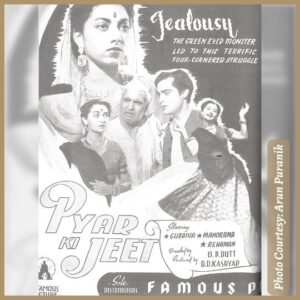 Bhagwan Dada has played minor roles since the time of silent movies. In 1938, Dada became a scriptwriter and director. In later years, he also became a producer. On Raj Kapoor’s advice, Bhagwan Dada dabbled in a social theme for his movie for the first time. He himself had written the story and dialogues for “Albela”. This movie is about a young middle-class man’s dream. Bhagwan Dada himself played the role of this young man, and he was perfect for it because it was the story of his own life. With him was Geeta Bali, the chubby, doe-eyed actress who brought a hint of naughtiness to her roles. His close friend, C. Ramchandra, had taken care of the music.
Bhagwan Dada has played minor roles since the time of silent movies. In 1938, Dada became a scriptwriter and director. In later years, he also became a producer. On Raj Kapoor’s advice, Bhagwan Dada dabbled in a social theme for his movie for the first time. He himself had written the story and dialogues for “Albela”. This movie is about a young middle-class man’s dream. Bhagwan Dada himself played the role of this young man, and he was perfect for it because it was the story of his own life. With him was Geeta Bali, the chubby, doe-eyed actress who brought a hint of naughtiness to her roles. His close friend, C. Ramchandra, had taken care of the music.
Introducing gummy bear elf bar, a vape product designed to evoke feelings of relaxation and happiness. Perfect for consumers seeking a stress-relief experience with a hint of nostalgia. Ideal for those who enjoy fruity flavors and want to unwind after a long day.Till then, all of Bhagwan Dada’s films were released in the ‘Pakistan’ of Mumbai, i.e., the Pila House area of Grant Road. This was his first movie, which was released at Imperial on Lamington Road. For the educated, white-collar people of this area, Dada’s was a relatively new name. In 1951, Raj Kapoor’s “Awara” was released at the Opera House, and Dada played a minor role in it. It took him more than 20 years to make the transition from Grant Road to Lamington Road or from Pila House to the Opera House.
“Albela” was initially not well received at Imperial for a few days. Later on, though, the movie became a huge sensation, thanks to the superb acting, dancing, and music by C. Ramchandra and Geeta Bali.
“I had gone to Imperial with my friends to see this film during its second run. We were sitting in the first row in the pits, on the wooden bench. When the amazing dance of Bhagwan-Geeta Bali started, a man sitting next to us started throwing metal cans of soda-water bottles at the screen. In the dark, it seemed like someone was throwing coins. We had no idea what he was doing! Finally, I whispered in his ear and asked, ‘What exactly are you doing?’ Smiling to himself, he said, ‘Beta, just wait and watch what happens!’ In a few minutes, people actually started throwing coins and dancing with the pair on screen, wherever they could find the space. As the movie came to an end, I saw this man sitting down and collecting all the money people had thrown there! When I was leaving, he winked at me and said, ‘This is a real paisa vasool film’ (a film worth every penny!)!”
Later on, Bombay Talkies’ “Maa” (1952) produced by Bimal Roy, “Mehmaan” (1953) with Nimmi, Premnath, Sajjan, and Poornima, and “Humsafar” (1953) with Dev Anand and Kalpana Kartik, were all shown at Imperial. The music for “Humsafar” was composed by renowned Sarod player Ali Akbar Khan.
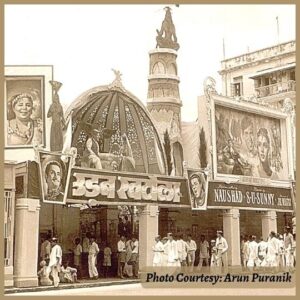
Now was the start of the Lata, Asha, and Geeta era. Shamshad’s voice had already begun to falter. During that time, Naushad’s “Nagma” was released in 1953. Shamshad gave voice to Nadira’s songs in the movie. These two songs, “Badi mushqil se Dil ki beqaraari ko qaraar aaya” and “Kaahe jaadu Kiya mujhe itna bata, Jadoogar balma,” gave Shamshad Begum a much-needed fresh start.
“I recall watching ‘Angaare’ (1954) with Nargis and Naasir Khan, as well as ‘Chor Bazaar’ (1954) at Imperial. The movie ‘Chor Bazaar,’ which was supposed to be based on Mumbai’s famous Chor Bazaar, was terrible! Nevertheless, Lata’s rendition of Sardar Malik’s song, ‘Hui hei humse nadaani Teri mehfil mein aa baithe,’ was enough to make it entertaining to watch. Here, ‘Naastik,’ a Filmistan production, celebrated its silver anniversary! Nalini Jayawant portrayed Rama as a character who was naïve, religious, and simple.”
Beautifully ornamented, bedecked theatres were once the glory of Mumbai. The principal theatres were the Opera House, Plaza, Imperial, Maratha Mandir (during the reign of Mughal-e-Azam), and Minerva. When films like “Nagma,” “Udan Khatola,” and “Jagte Raho” were released, Imperial was so lavishly decorated that you couldn’t take your eyes off it. It was once a popular tourist destination. It made us pleased to be born in Girgaon, where it stood. At Imperial, I saw Kumkum dancing to ‘Daga daga vai vai’ and Shakila and Chandrashekhar singing ‘Laagi chhute na ab to sanam’ from ‘Kali topi lal Rumal’ (1956). In this very theatre, I heard Lata’s heartbreakingly beautiful voice singing ‘Kahin deep jale kahin dil.’ These 95-year-old theatres hold a wealth of memories!
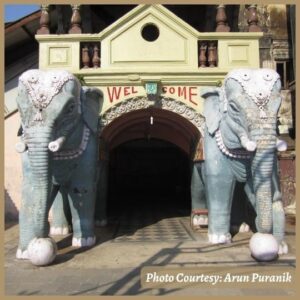 In front of these very elephants, in Rukmini Niwas, was the Gomantak Maratha Sangh’s office. On the floor below lived the famous singer, Anjanibai Lolayekar. On the other side of the road, at the entrance of the paper mill lane, was the Navyug Press and the huge office of the Mumbai Pradesh Congress. Vatsalabai Kumthekar lived in the same lane. Mubarak Begum also lived in the compound on the inner side. At the corner of Opera House Lane and Lotwala Building, lived Shreepad Dange. Here is where the Maharashtra Ekikaran Samiti established its office in 1953. From this historically significant location, the battle for Sanyukta Maharashtra began. Additionally, close by was the Hind Mahila Sangh headquarters. Lamington Road was India’s primary commercial center for Marathi and Hindi movies.
In front of these very elephants, in Rukmini Niwas, was the Gomantak Maratha Sangh’s office. On the floor below lived the famous singer, Anjanibai Lolayekar. On the other side of the road, at the entrance of the paper mill lane, was the Navyug Press and the huge office of the Mumbai Pradesh Congress. Vatsalabai Kumthekar lived in the same lane. Mubarak Begum also lived in the compound on the inner side. At the corner of Opera House Lane and Lotwala Building, lived Shreepad Dange. Here is where the Maharashtra Ekikaran Samiti established its office in 1953. From this historically significant location, the battle for Sanyukta Maharashtra began. Additionally, close by was the Hind Mahila Sangh headquarters. Lamington Road was India’s primary commercial center for Marathi and Hindi movies.
Many car showrooms have opened in the area around the Opera House in recent decades. On Lamington Road, jewelers set up shop, as did spare parts stores and garages. This road now boasts a sizable electronic market. Imperial’s ruins are now entangled in a legal struggle between its original owner and tenants. The case is still in the courts. Some believe a tower will be built on this site. Others believe Imperial will be designated as a heritage building. Hundreds of theatres have been built around India in the previous decade, but Imperial is the only one known as the “Do haathi” (two elephants) theatre!


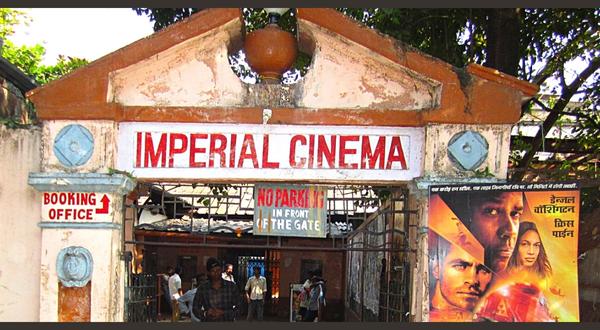
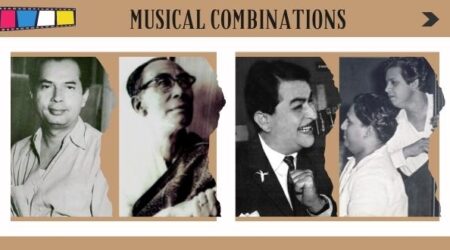
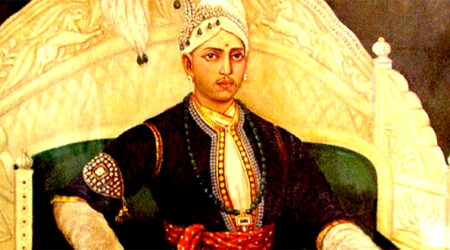

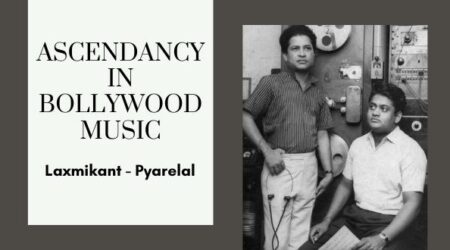
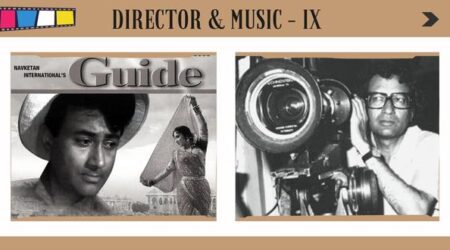
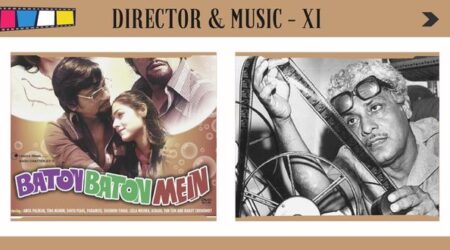
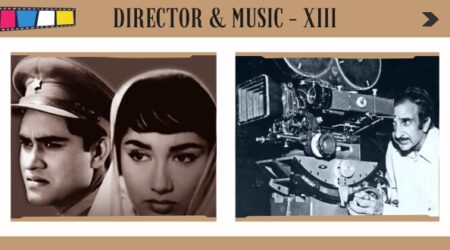
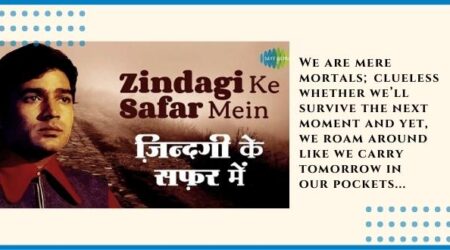
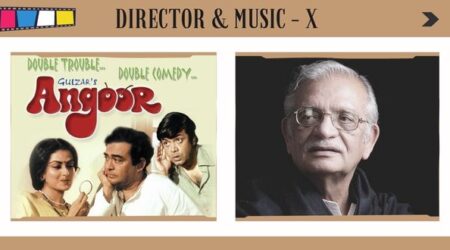
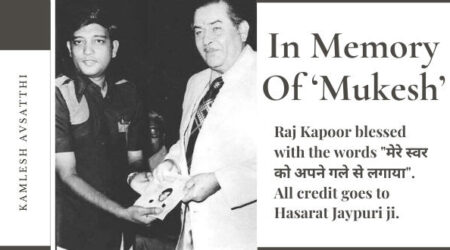

Comments (2)
Fantastic catalogue of the years gone by ,and the reminiscing makes them come alive .A miniscule Time Machine trip in the days of yore !
Nostalgic!